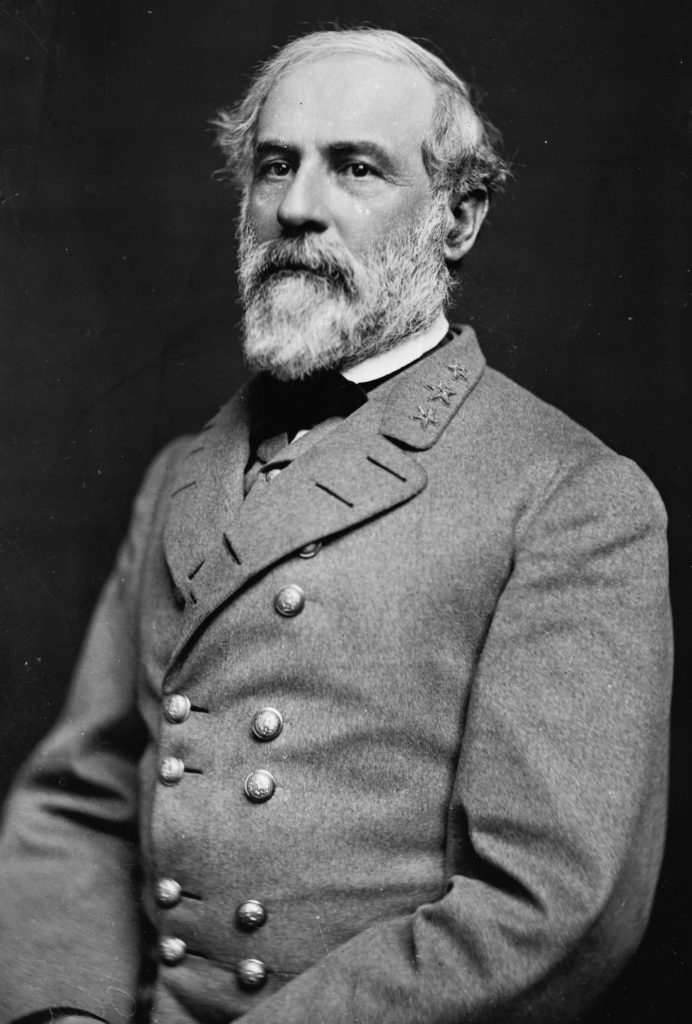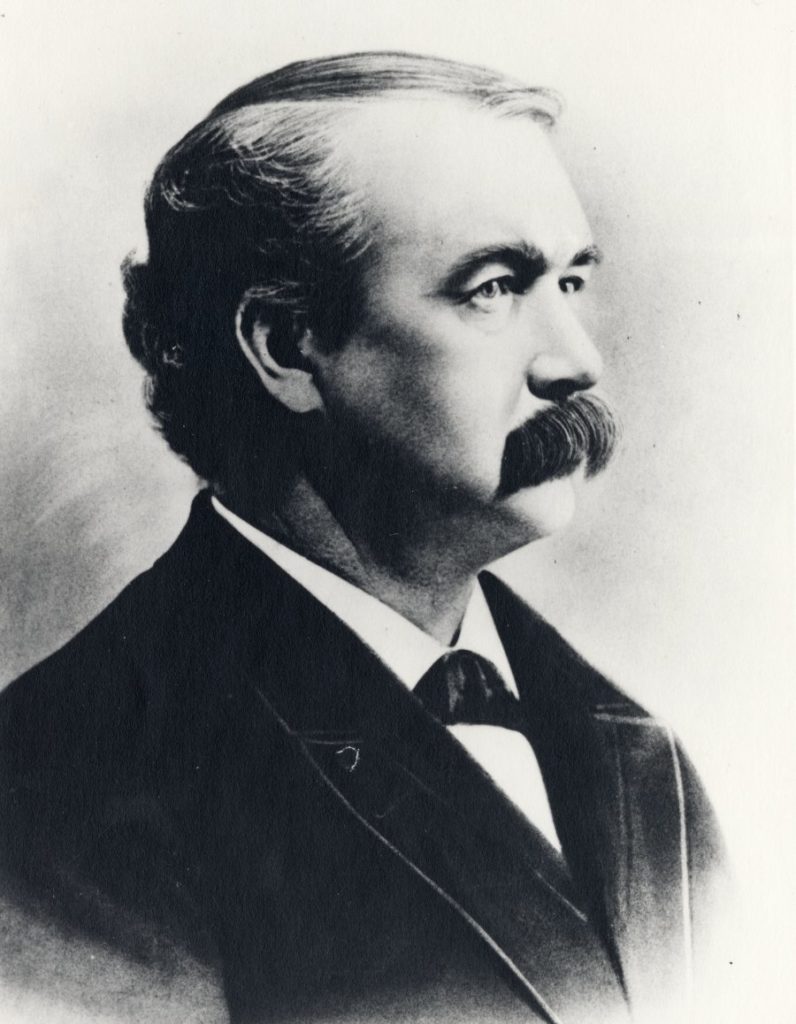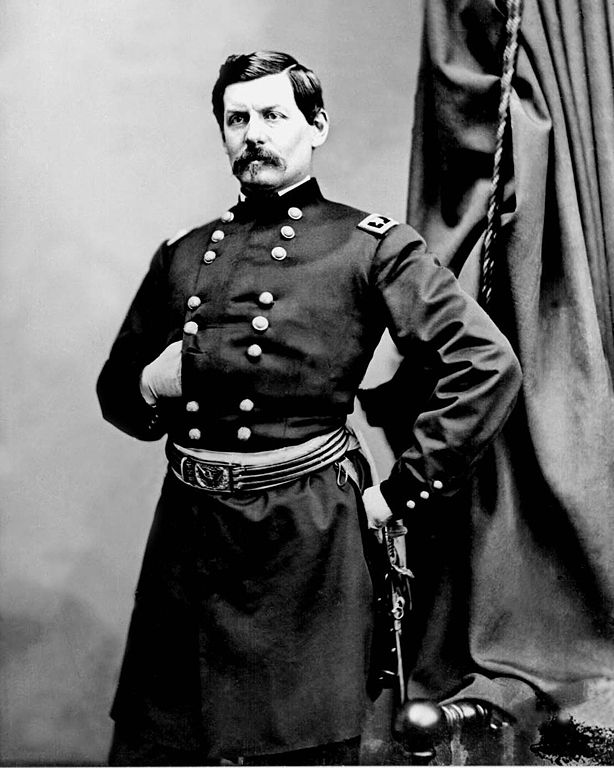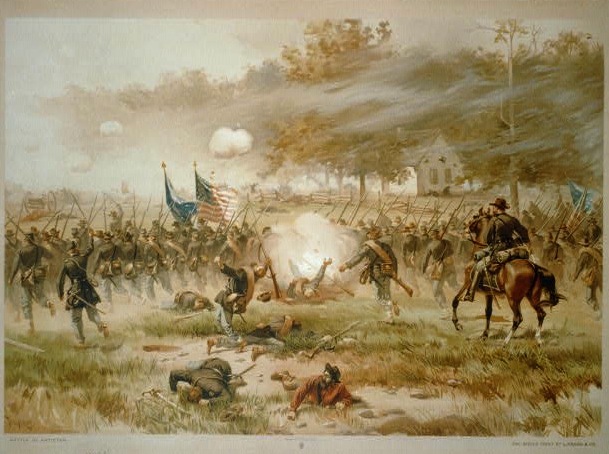On September 13, 1862, in a clover field south of Frederick, Maryland, soldiers in the 27th Indiana Volunteer Infantry Regiment found a roll of paper wrapped around three cigars. The Hoosiers had stumbled upon a copy of General Robert E. Lee’s Special Orders No. 191, often referred to as the Lost Order, addressed to Lieutenant General D. H. Hill and explaining the disposition of Lee’s forces, then invading Maryland. The document worked its way up the Union chain of command and ultimately fell into Maj. Gen. George B. McClellan’s hands. Within hours, the Federal army moved to strike while the enemy was divided. The sequence of events spurred McClellan to turn his army to the west and attack Lee at South Mountain and near Sharpsburg, forcing the Confederate forces across the Potomac and ending Lee’s first invasion of the North.

Controversy over exactly how the order was discovered has existed since the 19th century. It has generally been assumed that two men, Corporal Barton Warren Mitchell and Sergeant John Bloss of the 27th Indiana, found the order.
But doubts about Mitchell’s involvement with the serendipitous Union discovery keep resurfacing. One author even claimed recently that Mitchell was illiterate and that his son had introduced him into the story in the late 1880s while trying to secure a veteran’s pension for his mother. Letters held by Mitchell’s descendants, however, confirm that the middle-aged cooper serving in the 27th helped find Lee’s lost Special Orders No. 191.
One of the earliest published accounts about the finding of the order appeared in The Indiana Soldier in the War for the Union, in 1869. It states that on September 13 “the confidential orders of General Lee to his corps and division commanders, detailing his plans, was found by Corporal B. W. Mitchell, of company F, Twenty-seventh Indiana.”
In an 1886 account printed in Century Magazine and later in Battles and Leaders, Colonel Silas Colgrove, commander of the 27th Indiana, recalled that the order was “found by Mitchell near where they had stacked arms” and was brought to him by Mitchell and Sergeant John Bloss. Based on such authorities and, presumably, his father’s own statements, Mitchell’s son William repeated the claim in his 1926 book Linn County, Kansas: A History.

But other members of the 27th Indiana Regiment gave a different account of the matter at veteran reunions. Several veterans recalled in 1905 affidavits that the order was picked up by another member of the regiment and taken up the chain of command by Bloss alone. The soldiers stated that Mitchell, although present at the time, never touched the order. Bloss reinforced that account when he made little mention of Mitchell’s involvement in an 1892 presentation on the Lost Order.
Mitchell died in 1868 without making any formal public statement on the matter. Sometime prior to his death, however, he pursued remuneration for his part in the finding of the Lost Order.
He wrote a letter to John Bloss, probably early in 1867, which no longer survives, although Bloss’ response is in the Mitchell papers. The letter is undated, and reads as follows:
Orleans Indiana
B.W. Mitchell
Sir,
Your communication has not come direct to me and hence the delay in answering. You wish me to certify to an order found by you, I cannot do this at present, for I have forgotten in fact. I only remember the general features. I can give you the order almost verbatim in about two weeks. My father-in-law has a book in which have seen the order and I will go there in a couple of weeks.
My recollection is that we read the document first, and I believe you got a segar out of the envelop. We first took it to Captain Kop, and I don’t remember who carried it. But I think he carried it to Col. Colgrove. I recollect of seeing the Col get on his horse and gallop over to Gen. Gordon’s Hd Qrs and when he returned he said that it was a very important document. And think in a few minutes we started for the mountains, and the battle was soon brought on. I know these things and can certify to so many of them as you see proper, giving the order or the page where it may be found. You can answer this in less than two weeks and there I will know better what to write….
John M. Bloss
Also in Corporal Mitchell’s papers is his letter of April 1, 1867, to Ohio Congressman Robert Cumming Schenck, the chairman of the House Committee on Military Affairs, asking for help in contacting McClellan and the general’s chief of staff to verify his claim. Mitchell wrote that he had a certificate from Colonel Colgrove supporting his account. The certificate is signed both by the colonel and his relative, Major Theodore Colgrove.
Winchester Ind.
March 19th, 1867
We certify that Private Barton W. Mitchell of the 27th Regiment of Ind. Volunteers on the 13th day of September, 1862, while the said regiment along with the remainder of the army which was then halting near Frederick City, Maryland, found and delivered to the commanding officer of said regiment, who in turn immediately delivered the same to the commanding officer of the forces. A circular from Robert E Lee commanding the rebel forces then invading the state of Maryland detailing the plans to be followed by said rebel army and assigning positions to be occupied by different army corps of said rebel army until the 15th of said month (Sept 1862). And we believe that the valuable information contained in such circular contributed greatly to the success which attended our army at South Mountain and Crampton’s gap on the 14th day of said month and the total defeat of the rebel army at Antietam on the 17th of said month.
Silas Colgrove
Late Col of the 27th reg. Ind. Vol.
On April 7, 1867, Schenck forwarded Mitchell’s letter to James C. Wetmore, who was the Ohio military agent stationed in Washington, D.C. Two days later, on April 9, 1867, Wetmore replied with a note on how to contact former McClellan chief of staff Brig. Gen. R.B. Marcy in St. Louis. Schenck gave Marcy’s information to Mitchell, who evidently contacted Marcy and obtained a certificate about the Lost Order, which Mitchell mentioned in his own letter to Wetmore:
Hartsville Ind, June 30th 1867
Mr J.C. Wetmore, Esq.
On the 13th of Sept 1862, I found and sent to Gen G. B. McClellan then commanding the Union Army in the State of MD a circular order of Gen R.E. Lee commanding the rebel forces then invading Md. The said order directed his Div and Corps commanders what post to occupy and fortify till the 15th of the said Sept 1862. The information thus timely given enabled the Union commander to anticipate and prevent the rebels from occupying South Mountain Pass and Crampton’s Gap on the 14th and the concentration of their army at Boonsboro, as was proposed in said order.
I have never received anything for this service. I was wounded in the battle of Antietam on the 17th of said Sept and lay in the Hosp. eight months, which prevented me from prosecuting my claim for this service.
I want now to lay this claim before Congress and I desire your services in getting up the testimony in proper shape if you think it a claim that can be made available. I send herewith a petition to Congress and also a copy of a certificate of Col. Silas Colgrove of the 27th Ind. Vol. and T. Colgrove, Major of the same, to whom I gave the above order and he, that is the Col, with Gen G.H. Gordon, took it to Gen McClellan.
You will know better than I what evidence is needed to go with the petition. Gen R. B. Marcy who was chief of staff to McClelan will be a valuable witness to show the value of the information. These are the witnesses to prove that I furnished the information to Gen McClelan: Col. Silas Colgrove and Maj. T. Colgrove of Winchester, Randolph County Ind. and Capt John M Bloss of New Philadelphia, Washington Co., Ind.
Write to me and let me know if it is a claim you can do anything with.
Yours,
Barton W. Mitchell
…P.S. Enclosed I send a letter that I received from Gen R. B. Marcy
Barton Mitchell died on January 29, 1868, in Hartsville, Ind. It is unknown what became of his petition to Congress. William Mitchell wrote in his history of Linn County, Kan., that his father “received high commendation for this service.” It would appear that the only commendation he received came in the certificates provided by Colonel Cosgrove and General Marcy, the latter of which does not seem to have survived.
In 1879, William Mitchell wrote a letter to McClellan, then governor of New Jersey, to try and validate his father’s role with the Lost Order. In a November 18, 1879, letter, McClellan stated that he understood that the order was found “by a private soldier, and, as I think, of an Indiana regiment,” and further says “it is doubtful that I ever knew the name” of the finder. This letter was printed in Century Magazine in 1887, and later in Battles and Leaders. The original of McClellan’s letter is among the Mitchell family papers, along with some correspondence from Century Magazine editors Clarence C. Buel and Robert U. Johnson.

William Mitchell also got in touch with Colonel Silas Colgrove, who responded on December 3, 1879. This letter, differing slightly from Colgrove’s 1886 article in Century Magazine, is similar in content to the certificate signed by Colonel Colgrove and Theodore Colgrove:
Winchester, Ind
Dec 3, 1879
W.A. Mitchell, Eqr
Dear Sir,
Your letter of the 24th inst. is at hand, and in reply I would say the facts of the matter you inquire about are as fresh in my memory at this time as though it had have transpired but yesterday. I now allude to the finding of the order of Gen Lee’s order to his Corps commander and which information determined Genl McClellan’s subsequent movements. The facts are these. On the 13th of Sept, 1862, our army marched to Frederick City and took up its position on the same ground that had been occupied by the Confederate Army and had been left as I believe on that same day. Our troops were halted in lines and stacked arms. The manner of the halt and the stacking of the arms indicated that the halt was but temporary. I think I had not yet dismounted from my horse when Private Barton Mitchell came to me and handed me a piece of paper wraped around two cigars. He said he had picked it up on the ground, that it might be of importance. I took it and read it and found it to be a general order of Genl Lee directed to Genl D.H Hill in which the march of the different Corps of the rebel army was detailed. I immediately saw the importance of the information and galloped to Gen’ McClellan’s Headquarters and delivered the document to one of his staff. From memory I would say it was not more than 30 minutes before our army was in march. We overtook the enemy at Crampton’s Gap in South Mountain where we had a severe fight and dislodged the enemy that night. All of the above facts I clearly and distinctly remember.
In regard to the subsequent wounding of Private Mitchell at Antietam my memory is not quite so clear. All of my papers were stored at Chatanooga on our Atlanta Campaign, and subsequently lost, and have nothing but memory to refer to or call to my aid. The great number of killed and wounded of my regiment and the length of time that has transpired render my memory indistinct. I can only say that I have endeavored to call the circumstances and the names of the wounded at Antietam to mind. My best impression is that Private Mitchell was among the wounded and sent to the field hospital. Our wounded was sent from the field hospital to a hospital at Boonsboro a little town about four miles from Antietam and I think some of them was sent from there to Washington or Baltimore.
You will see from these statements what I can make an affidavit to in positive terms and as to the wounding I can only state upon my best recollection and belief. Your attornies can see how to draw up the affidavit if you desire one from me.
The memory of your father and his gallant services in my old regiment ever be duly appreciated by me. Anything I can do for his widow and family will be cheerfully done.
Your Obt Servant
S. Colgrove late Col
27th Ind Vol.
This statement from Colonel Colgrove is dated late 1879, well before the Lost Order drew much historical attention, aside from Mitchell’s petition and the 1869 account in The Indiana Soldier in the War for the Union. Except for the certificate he provided Mitchell on March 19, 1867, the colonel’s letter provides the earliest known comment from Colgrove regarding the finding of Lee’s Special Orders No. 191— and establishes Barton Mitchell’s enduring place in history.
Originally published in the September 2007 issue of America’s Civil War. To subscribe, click here.





